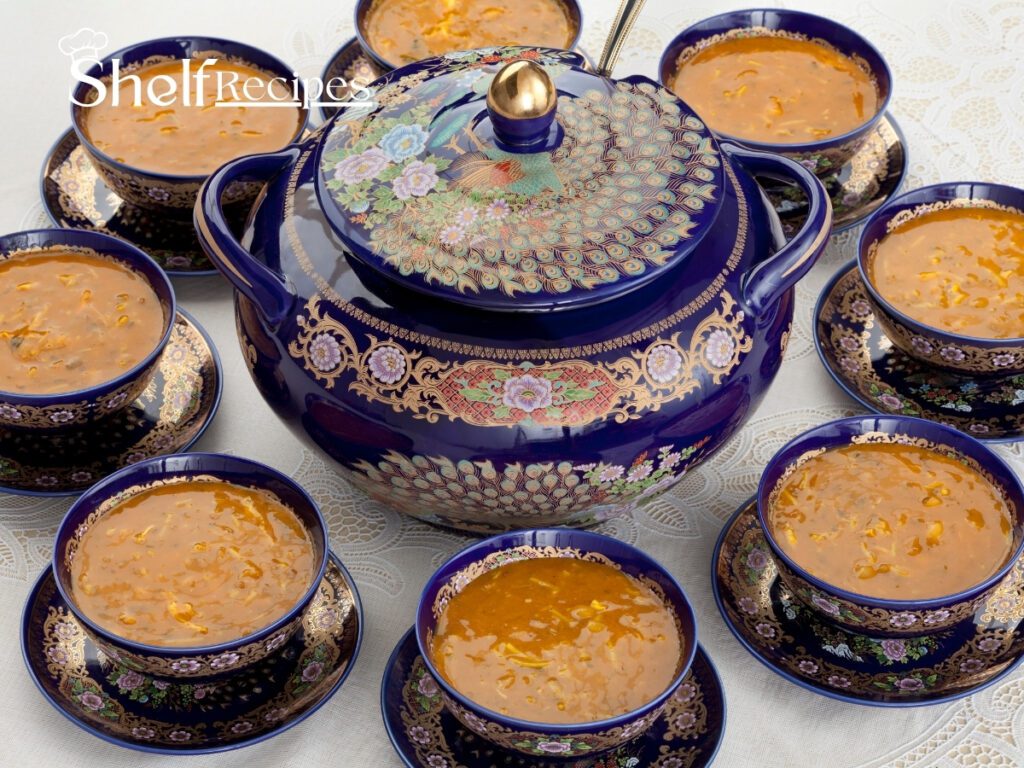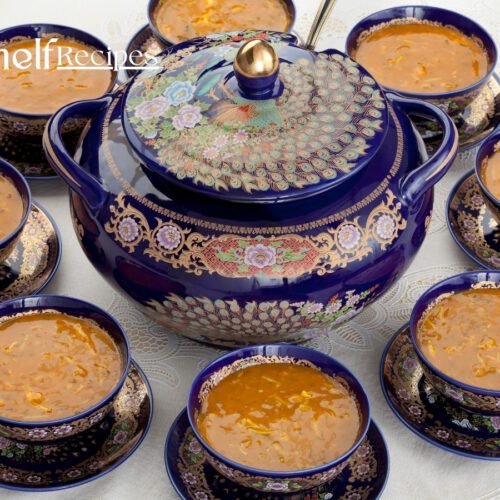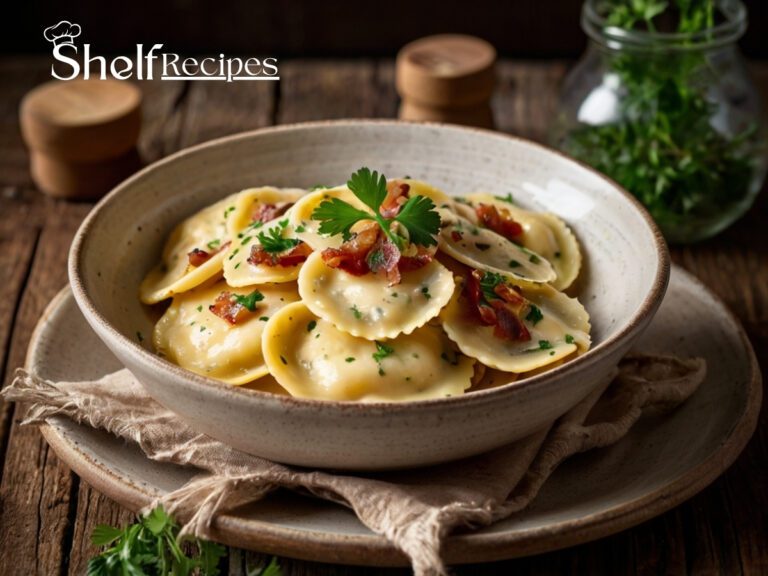
Harira soup is a traditional Moroccan dish, immensely popular and essential during Ramadan and beyond, cherished in Moroccan households worldwide. This rich and comforting soup, prepared with tomatoes, lentils, chickpeas, and aromatic spices, is a staple that many consider almost obligatory for iftar, with some even feeling guilty if they don’t partake in this beloved meal. Whether you’re seeking a nutritious meal or an authentic taste of Morocco, this Harira soup recipe is a must-try.
What is Harira Soup?
Cultural Significance: Harira is not just a soup; it’s a symbol of Moroccan hospitality, often prepared for special occasions like Eid al-Fitr, weddings, or to welcome guests.
Ingredients Symphony: Combines lentils, chickpeas, tomatoes, onions, celery, and sometimes meat like lamb or beef, all simmered with spices such as cinnamon, ginger, and saffron.
Texture and Flavor: Known for its thick, hearty consistency due to the use of flour or vermicelli, offering a comforting mouthfeel with a deep, aromatic flavor profile.
Historical Roots: Dating back to the 13th century, Harira has evolved but remains a staple in Moroccan cuisine, reflecting centuries of culinary tradition.
Historical Background of Harira Soup
Origins and Evolution:
- Ancient Roots:
- Harira’s origins can be traced back to medieval times in Morocco, with influences from the Berber, Arab, and Jewish communities. It likely started as a simple peasant dish that utilized available ingredients like lentils and chickpeas.
- Medieval Influence:
- During the Middle Ages, with the spread of Islam and the growth of trade routes, Moroccan cuisine absorbed new ingredients and techniques. Spices like cinnamon and saffron, which are pivotal in Harira, came into play through these exchanges.
- Cultural Fusion:
- The soup reflects the cultural melting pot of Morocco, combining indigenous Berber ingredients with those introduced by Arabs, Jews, and later, Europeans. This fusion is evident in the variety of spices and the inclusion of vermicelli, which might have been introduced during the Andalusian period.
Significance in Moroccan Culture:
- Ramadan Staple:
- By the 13th century, Harira had become synonymous with the breaking of the fast during Ramadan, symbolizing community and charity. It was (and still is) common for families to prepare large pots of Harira to share with neighbors, the poor, and travelers.
- Symbol of Hospitality:
- Harira is more than just food; it’s an expression of Moroccan hospitality. Serving Harira to guests, especially during religious or celebratory events, signifies generosity and welcome.
- Variations Over Time:
- Initially, Harira was probably much simpler, but over centuries, it evolved with the addition of meat (like lamb or beef), tomatoes (introduced post-Columbian exchange), and various spices, reflecting the wealth of the region or the season’s produce.
Historical Recipes and Documentation:
- Written Records:
- Early recipes for Harira can be found in medieval cookbooks like “Fāṭima bint al-Ḥussain’s 13th-century “Kitab al-Ṭabīkh” (The Book of Dishes), though not explicitly named, dishes similar to Harira are described.
- Preservation of Tradition:
- Despite modern variations, traditional methods of preparation have been largely preserved through oral tradition, with recipes passed down through generations. This continuity is crucial in maintaining the authentic taste and significance of Harira.
Modern-Day and Global Recognition:
- Contemporary Adaptations:
- Today, Harira has not only remained a beloved dish in Morocco but has also gained international recognition. Chefs and home cooks around the world adapt it, sometimes replacing traditional ingredients with local alternatives while trying to keep the essence of the soup intact.
- Cultural Ambassador:
- Harira has become a cultural ambassador for Moroccan cuisine. It’s often highlighted in culinary festivals, international cookbooks, and in the menus of Moroccan restaurants worldwide, thus spreading Moroccan culinary heritage.

Moroccan Harira Soup
Ingredients
Main Ingredients:
- 1 cup chickpeas soaked overnight
- ½ cup green lentils
- 500 g beef or lamb optional, diced
- 1 onion finely chopped
- 3 tomatoes pureed
- 2 tbsp tomato paste
- 1 cup celery chopped
- 1 cup fresh cilantro and parsley chopped
- 2 tbsp olive oil
Spices & Seasoning:
- 1 tsp ground ginger
- 1 tsp turmeric
- 1 tsp cinnamon
- 1 tsp black pepper
Salt to taste
- 1 tsp paprika
- 5 cups vegetable or chicken broth
- Thickening & Garnish:
- ¼ cup flour mixed with water to form a slurry
- 1 egg beaten, optional
- Lemon wedges for serving
Instructions
Step 1: Prepare the Base
- Heat olive oil in a large pot over medium heat.
- Add chopped onions, celery, and meat (if using). Sauté until onions become translucent.
- Stir in tomato paste, pureed tomatoes, and spices. Cook for 5 minutes.
Step 2: Cook the Lentils and Chickpeas
- Add soaked chickpeas, lentils, and broth.
- Cover and simmer for 30 minutes, stirring occasionally.
Step 3: Thicken the Soup
- Slowly add the flour slurry while stirring to prevent lumps.
- Simmer for another 10 minutes until the soup thickens.
Step 4: Add the Finishing Touches
- Stir in fresh cilantro, parsley, and beaten egg (optional).
- Simmer for 5 more minutes, then remove from heat.
Step 5: Serve and Enjoy!
- Serve hot with lemon wedges and crusty bread for an authentic Moroccan experience.
Nutritional Benefits of Harira Soup
Holistic Nutrition:
- Rich in Protein:
- Harira includes legumes like chickpeas and lentils, which are excellent sources of plant-based protein. Additionally, if meat is included, it further boosts the protein content, essential for muscle repair and growth, particularly beneficial after fasting.
- High Fiber Content:
- The use of lentils, chickpeas, and sometimes whole grains like vermicelli provides a significant amount of dietary fiber. This aids in digestion, helps maintain bowel health, and contributes to feeling full longer, which is particularly useful during Ramadan to manage hunger and stabilize blood sugar levels.
- Vitamins and Minerals:
- Harira is packed with vitamins from its vegetable base – tomatoes supply vitamin C, while celery and onions offer vitamins K and B6. The legumes contribute to the intake of iron, magnesium, and zinc, enhancing overall health, immunity, and energy levels.
- Antioxidant Properties:
- Spices like turmeric, cinnamon, and saffron are not just for flavor; they bring a wealth of antioxidants which help combat oxidative stress, reduce inflammation, and potentially lower the risk of chronic diseases.
- Heart Health:
- The ingredients in Harira, especially when made with olive oil or lean meats, support cardiovascular health. Lentils and chickpeas can help lower cholesterol levels, and the spices can improve heart function and reduce blood pressure.
- Hydration and Electrolytes:
- As a soup, Harira aids in rehydration, crucial after fasting. The combination of water, salt, and minerals from the ingredients helps replenish lost electrolytes, maintaining body fluid balance and preventing dehydration.
- Sustained Energy:
- The combination of complex carbohydrates from grains and legumes with proteins and fats provides a slow release of energy, which is ideal for breaking the fast as it helps avoid sharp spikes and drops in blood sugar.
- Bone Health:
- If made with bone-in meat or meat stock, Harira can be a source of collagen, calcium, and other nutrients beneficial for bone health.
- Weight Management:
- Despite being hearty, Harira’s high fiber and protein content can aid in weight management by promoting satiety, reducing the overall caloric intake, and supporting a healthy metabolism.
- Mental Well-being:
- The comforting warmth and rich flavors of Harira can have psychological benefits, providing a sense of comfort and satisfaction, which is particularly uplifting in the context of fasting and communal eating.
Harira, therefore, not only serves as a delicious and traditional meal but also as a nutritional powerhouse, making it an excellent choice for health-conscious individuals looking to maintain or improve their well-being while enjoying a taste of Moroccan culture.
Why Harira is the Perfect Ramadan Soup
- Nutrient-Rich:
- It contains a variety of legumes for protein and fiber, which are essential after a day without food.
- Rich in vitamins from fresh vegetables, supporting overall health during fasting periods.
- Energizing:
- The combination of complex carbohydrates and proteins provides sustained energy, which is crucial after fasting.
- Comforting & Flavorful:
- The blend of spices like cumin and coriander not only adds warmth but also aids digestion, making it perfect for breaking fasts.
- Its creamy texture from pureed ingredients gives a comforting, home-cooked feel.
- Hydrating:
- With its high water content, Harira helps in rehydration, which is vital after fasting.
Serving Suggestions & Variations
Traditional Side Dishes:
- Moroccan Dates: For natural sweetness and to balance the savory soup.
- Chebakia: Honey-soaked sesame cookies, adding a festive touch to the meal.
Vegan Option:
- Meat-Free: Substitute meat with more beans or add tofu for protein.
- Broth Swap: Use vegetable broth instead of meat stock to keep it purely plant-based.
Spicy Twist:
- Cayenne Pepper: Introduce a bit of heat with cayenne or harissa for those who enjoy a spicy kick.
- Chili Flakes: Sprinkle on top for an additional layer of flavor and heat.
More Moroccan Recipes to Try?
Looking for more Moroccan flavors? Check out these delicious recipes:
- Moroccan Chicken Tagine from Salima’s Kitchen
- Homemade Moroccan Mint Tea from Moroccanzes
Final Thoughts
Harira soup is more than just a dish—it’s a symbol of togetherness and tradition. Whether for Ramadan or a cozy dinner, this Moroccan soup is a flavorful and nutritious addition to your table.
Have you tried making Harira soup? Let us know your experience in the comments!
Don’t forget to check out more on our Ramadan recipes page from different countries!






